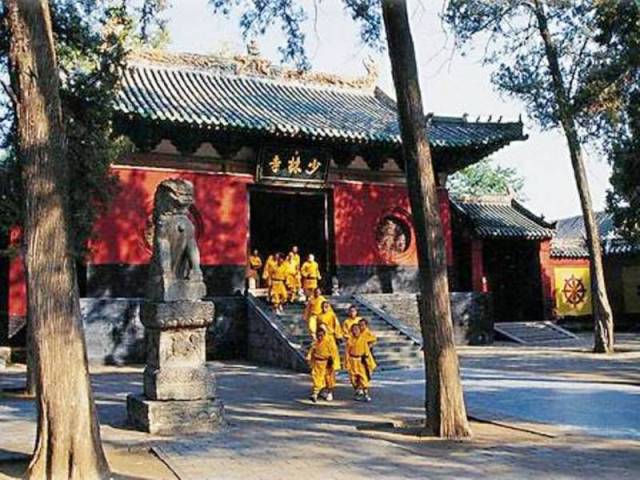『Henan Province』
HeNan

Having a long history, henan is known as a “cradle of the chinese civilization” and “ the birthplace of the culture on central plains”. The province has numerous places of historical interest and scenic beauty, and abounds in cultural relics. luoyang, kaifeng, anyang, nanyang, shangqiu, zhengzhou and junxian are all national famous historical and cultural cities. Major tourist attractions are: longmen grottoes, a world cultural heritage site, dahe village ruins including yangshao, longshan and zhou cultures, yin ruins, white-horse tempel, guanlin, iron pagoda, grand chancellor’s temple, dragon pavilion, shaolin temple and mount songshan scenic resort.northwestern henan is screened by mountains on three sides. Major mountains of the province are Funiu, Taihang, Tongbai and Dabie mountains, as well the central sacred mountains –Songshan mount. Main rivers include the Yellow, Huaihe and Weihe rivers.
Having a long history, henan is
known as a “cradle of the chinese civilization” and “ the birthplace of
the culture on central plains”. The province has numerous places of
historical interest and scenic beauty, and abounds in cultural relics.
luoyang, kaifeng, anyang, nanyang, shangqiu, zhengzhou and junxian are
all national famous historical and cultural cities. Major tourist
attractions are: longmen grottoes, a world cultural heritage site, dahe
village ruins including yangshao, longshan and zhou cultures, yin ruins,
white-horse tempel, guanlin, iron pagoda, grand chancellor’s temple,
dragon pavilion, shaolin temple and mount songshan scenic resort.

4LongMeng Grottoes
Located along the banks on yihe river in luoyang, henan province, the longmen grottoes are important cultural relics under state protection. The carvings started in 493 and lasted more than 400 years to complete. Along the cliffs, there are more than 2,100 niches and 2,800 inscribed stone tablets. Buddhist pagodas and nearly 110,000 buddhist images and statues still exist today.
The grottoes are an outdoor art
museum, of stone carvings and have significant value to the study of
ancient china’s history and society. the most spectacular grottoes at
longmen include guyang grotto, binyang grotto, lianhua grotto, qianxi
temple and fengxian temple. the group statues of sambhaga-kayah at
fengxian temple are large and exquisitely carved.
The longmen
grottoes display the typical imperial style and combne features of
numerous sects of buddhism. they have the highest number of inscribed
stone tablets among china’s grottoes. In november 200 the longmen
grottoes was granted the title of “ the world cultural heritage site” by
unesco.

ShaoLin Temple
Shaolin temple, nestling among the
verdant pines and cypresses at the western foot of mount songshan,
henan province, is a famous ancient monastery in china. In 495, when
bodhidharma, a mahayana buddhist, left sri lanka for china in the 6th
century and developed the chan sect (a chinese buddhist school). at that
time, emperor xiaowen of the northern wei dynasty (386-534) ordered the
construction of a magnificent buddhist temple, named shaolin temple in
honor of bodhidharma, a knowledgeable monk who came from india to teach
buddhist scriptures to chinese.
In fact the shaolin temple is
famous for its chinese kungfu. It is said that bodhidharma was used to
do exercises by imitating a tiger, monkey, scorpion and mantis during
the intervals in his meditation. Over times the original form of martial
arts came into being. Due to the efforts of the original monks and
monks in later generations, the art was constantly improved, formalized
and refined.
The martial arts of shaolin temple
include several hundred varieties, such as chinese boxing, sword,
spear, cudgel, qigong (a deep breathing exercise), qinggong(light
skill), tongzigong(boy skill), zhuanggong(skill on stakes),
mashanggong(skill on horseback), buxiagong(skill on foot) and so on.
usually, the martial arts of shaolin are a secret and will not be passed
on to outsiders. The practice is also not to be made public. Their
genuine skill (kungfu) is accomplished through ten or scores of years of
hard practice. Their skill is indeed marvelous; the monks can walk
rapidly atop glass; they can walk on precipices like walking on flat
ground; they can break a brick with their head, cut a stone with hand,
pierce wood with fingers, and resist a lance with throat.
In china, shaolin temple is widely
considered to be one of the birthplaces of chinese martial arts.
Historical records show that the shaolin temple’s kungfu dates back to
some 1,500 years ago.
Thel Shaolin temple, built in 485
to help spread buddhism, consisted of 5,000 halls taking an area of
1,400 square kilometers. Unfortunately, in 1928, the most of it was
burned down and the 100 or so halls now still standing were built in the
1980s. despite that shaolin temple still retains its ancient charm and
it would be difficult to find a place to mach it in terms of chinese
kungfu.

White Horse Temple
One of the most venerable buddhist
shrines in china, the White House Temple stands 12 kilometers northeast
of luoyang. The resent ming and qing buildings in the temple were built
on the site of the original temple, which dated back 2000 years in 68
ad. The temple was the first buddhist temple to be built in china and
plays important role in the country’s buddhist history. Legend has it
that two buddhist monks from india, riding a white house, delivered the
buddhist scriptures to luoyang – hence the name of the temple. covering
an area of almost 40,000 square meters, the temple consists of over a
hundred halls and rooms.

Martial Arts Tour
A studio east of shaolin temple
offers martial arts performances and training courses to groups and
individuals from at home and abroad. Chengjian gully in Wenxian county,
60 km north of Zhengzhou, was the cradle of the chen school of taijie
boxing; martial arts training classes are held on a regular basis in a
studio in the county seat, which is also the site of an annual
international Taijie competition in september.

International Shaolin martial arts festival
Time: september 1 –5
Venue: Zhengzhou
Activities:
international shaolin martial arts performances and challenging
contest; performances of Central chinese traditional culture; hovercraft
cruise on the Yellow river
